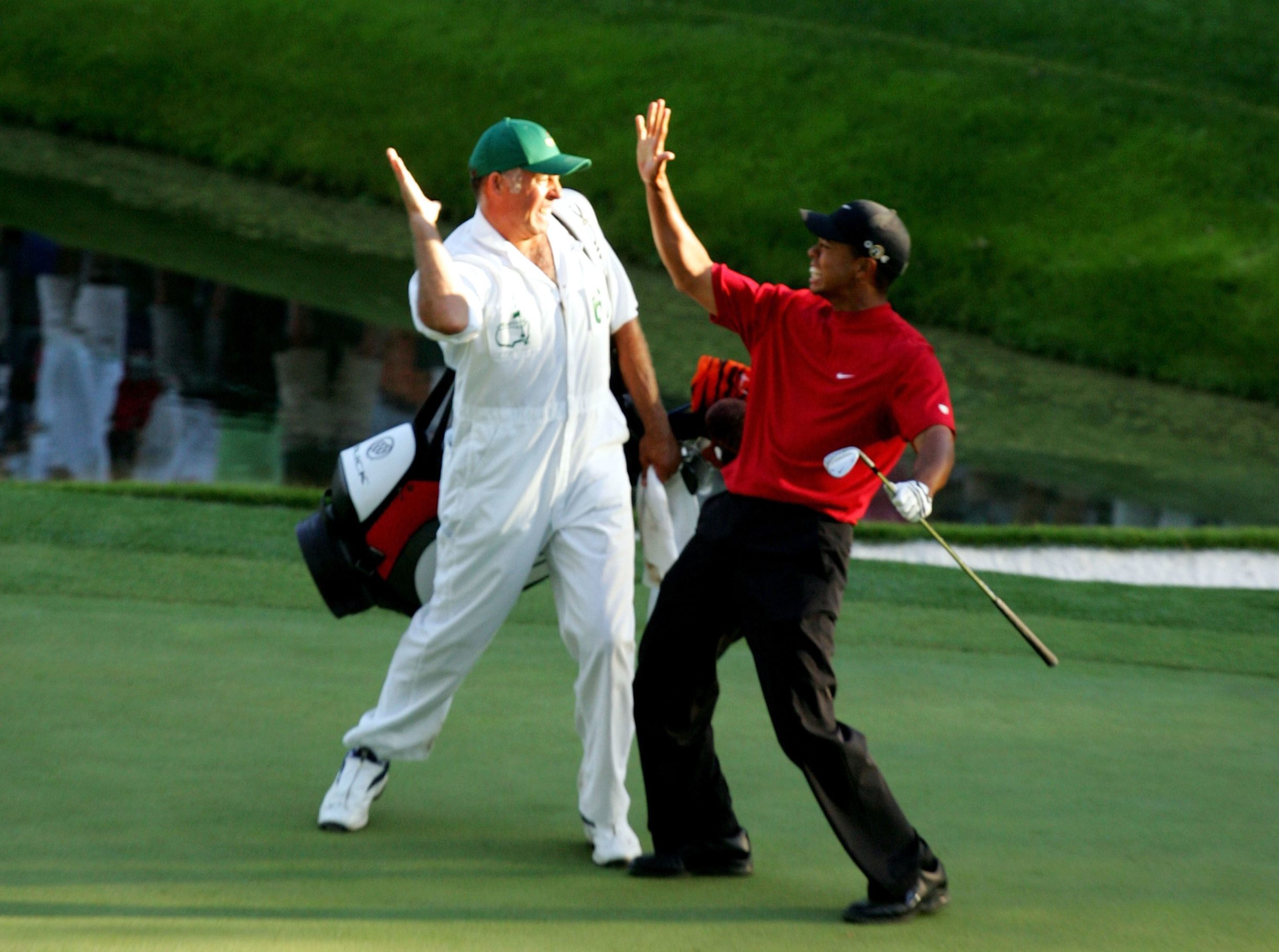The Chip Heard Around the World: Tiger Woods’ Iconic Moment on the 16th at Augusta
There are moments in sports so powerful, so legendary, that they transcend the game itself. For golf fans, Tiger Woods’ chip shot on the 16th hole during the 2005 Masters is one of those rare, unforgettable moments. It wasn’t just a great shot—it was the shot. One that fans, players, and kids watching at home would remember for the rest of their lives.

“It’s one of those shots where you know exactly where you were when it happened,” said one fan. “It’s got to be up there within the top shots that I remember watching growing up.” For some, the connection was even more personal. “I remember that shot really vividly because my dad happened to be at that Masters,” another recalled. “He happened to be on hole 16.”
The situation was tense. Tiger had only a one-shot lead over Chris DiMarco. His approach left him in a precarious spot—20 feet away, in the rough, left of the green. “I hit the worst 8-iron you could possibly hit,” Tiger admitted. “I thought I had possibly hit it into the water.”
The ball had settled on a patch of tightly cut grass with a severe slope leading down to the hole. A poor shot would roll far past or never make it close. “Looking at the chip, I was just trying to get the ball inside of Chris’s ball,” Tiger said. “If he happened to make it, I could answer with a par, and we’d be all square going down 17.”

As Tiger surveyed the shot, announcer Lanny Wadkins voiced what many were thinking: “He’ll be lucky to get this inside DiMarco’s ball.” It was a daunting challenge. The shadows and light made the read difficult. No player before him had come close from that angle. “There’s a good chance he doesn’t get this inside DiMarco’s ball,” the announcer repeated.
But Tiger saw something—a line, a glimmer of possibility. “I gave this a lot of thought,” he said. He opened the clubface, picked his spot, and made a smooth swing. The ball landed on the hill, checked, then began its descent.
“Here it comes.”
The crowd grew louder with every inch the ball traveled. Slowly, hypnotically, it crept down the hill, curling toward the hole. Then it paused—paused in a way that defied physics and time itself. The Nike logo faced the camera, perfectly centered.
“You couldn’t script it any better.”
“Oh my goodness.”
“It felt like that ball sat on the edge for 10 seconds,” one player said. “And every time I see the video, it feels longer.”
And then, as if pulled by the energy of the thousands watching—it dropped.
The crowd erupted. The loudest roar ever heard at Augusta National. “I went nuts. The place went nuts. It was the loudest roar I’ve ever heard,” someone recalled. “The hairs on the back of my neck stood up.”
The moment was bigger than golf. “The Tiger Effect is real,” another fan said. “I was an 11-year-old kid. I had no idea what it meant for his career or the sport. I just remember sitting there, fired up, feeling like I’d seen something unreal.”
That’s the power of Tiger Woods—not just to make great shots, but to create moments of pure magic under immense pressure. “All of it was just magical,” Tiger said later. “A very Tiger moment under the circumstances. One of the best I’ve ever hit. Not just because of the shot, but because of the turning point. Just the amping of the energy.”
Commentators still talk about the timing, the spin, the nerve. The shot has become immortal in the sport’s lore. “I’ve heard hole-in-one roars down there before,” one pro noted. “But nothing like that.”
“In your life, have you seen anything like that?” the broadcaster famously exclaimed.
No. No one had. And maybe, no one ever will again.